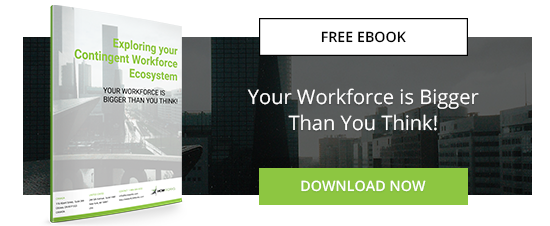More and more organizations are experiencing skills shortage, and it is becoming an issue across all types of businesses, not just in the traditional skilled labor sector for manufacturing. Top of mind for the C-Suite and HR professionals is how to address these skill gaps efficiently.
Although it sounds rather straightforward to solve, the issue is actually quite complex and potentially costly. Hypothetically, even if your company could locate workers with the correct skills, you need to consider the cost to hire them, and think about how quickly they would be working at peak productivity.
The majority of businesses experiencing these problems don’t have the time to wait around. If they did, operations, production and efficiency could slip. A better way to address the skills shortage problem is with fill ratios.
So what are fill ratios? A fill ratio is a metric based on new positions your company has created, and the volume of jobs you are intending to fill. Because of the ever changing global economy, and the dramatic change in workforces, it’s become even more crucial to consider fill ratios. If your organization has a low fill ratio, it means you are unable to satisfy your skills gaps and source your workers.
For example, consider time-to-fill rates, which have been becoming a high priority issue in certain industries as the market and workforce style shift. This means filling your skills gap will take longer, which further compounds the impact suffered from having the initial shortages. Intense competition in the labor market exacerbates the issue, which could mean certain positions can take months to fill.
A vacant position costs your company money, holds up your projects and ties up time and resources in the sourcing of your labor, creating one of the largest pain points for the industry, luckily there is a solution…
Low fill ratios are one of the contributing factors to the growth of contingent workforces as many organizations turn to contract, non-permanent workers to meet their hiring needs. But it’s not just about acquiring workers, in the current labor market, contingent workers come with a wealth of benefits that can offer organizations strategic advantage.
Contingent workers can save your organization time and address the pain points caused by a skills gap faster. You can worry less about how to find qualified full time workers in a highly competitive job market where very few exist, and instead, find skilled workers on a non-permanent basis. With a quicker on-boarding process, experienced contingent workers get up to speed and on projects faster.
Contingent workers draw on a deeper and wider experience base that can add knowledge and bring new skills to your organization, but they come with their own set of problems if they are not managed and sourced correctly. When you consider contracts, terms, regulations and laws, it can become daunting for inexperienced companies. That’s why a large percentage of businesses turn to a MSP, offering the required expertise to implement a contingent workforce program to increase their fill ratios.
Contingent workforce advisors provide your organization consulting advice and technology that works for you, improving your fill ratios and ensuring that your company receives the best fit solution.
Regardless of the fluctuating labor market, having an winning strategy to improve your fill ratios can turn your business around, save resources, time and stress, and reduce business disruptions.
If you are interested in discussing your contingent workforce strategy or in implementing a contingent workforce program in your organization, we’d be happy to help. Contact us to start a conversation.



